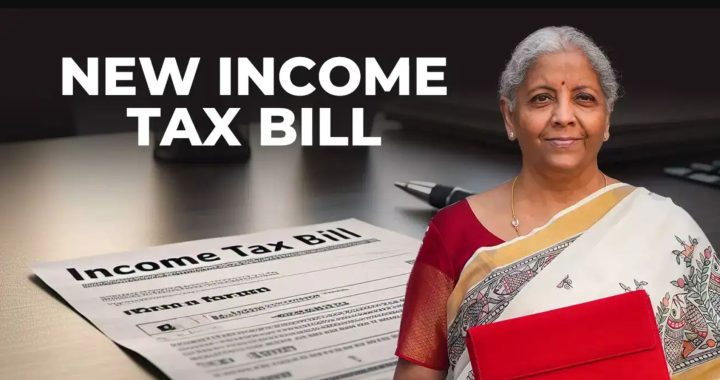CBDT Instruction regarding Compulsory Manual Selection of Cases for Scrutiny during FY 2015-2016
The CBDT (Central Board of Direct Taxes) has issued the above Instruction on August 31, 2015 to lay the parameters for compulsory manual selection of cases for scrutiny during the FY 2015-’16.
1. This instruction has been issued by superseding the earlier Instructions on Compulsory manual selection for scrutiny.
What are the procedure and criteria laid down by the income tax department for manual selection of returns/cases for scrutiny during the FY 2015-’16
(a) Cases involving addition in one of the previous years’ assessment more than Rs.10 lakhs on a considerable and frequent question of law or fact which is either confirmed in an appeal or is in anyway pending before an appellate authority.
(b) Cases involving addition in one of the earlier assessment years’ on the matter of transfer pricing of Rs.10 crore or more on a considerable or frequent question of law or fact which is either confirmed in an appeal or is still pending before an appellate authority.
(c) All of the assessments related to to survey under section 133A of the income tax Act, 1961 exclusive of those cases where books of accounts, documents etc were not confiscated and returned income exclisive of any disclosures made during the survey) which is not less than the returned income of previous assessment year. Nevertheless, cases such as the assessee retracts the disclosure made during the survey will not be considered by this exclusion.
(d) Assessments in search and seizure cases are to be made under section (s) 158B, 158BC, 158BD, 153A & 153Cred with section 143(3) of the income tax Act, 1961 and also for the returns filed for the assessment year applicable to the preceding year in which authorization for search and search was executed under section 132 or 132 A of the income tax Act, 1961.
(e) Cases of returns filed in response to notice under section 148 of the income tax Act, 1961.
(f) Cases in which registration under section 12AA of the income tax Act has not been granted or nacelle by the Commissioner of Income tax/Director of income tax concerned, however the assessee has been found to be claiming tax excemption u/s 11 of the income tax Act, 1961. Nevertheless, cases of such orders of the Commissioner of Income Tax or Director of Income Tax have been reversed/set-aside in an appellate proceedings will not be selected under this clause.
(g) The approval already granted under section 10(23C)/35(1)(iii)/10(46)of the income tax Act has been withdrawn by the competent authority, however the assessee has been found claiming tax-exemption or benefit under the abovementioned provisions.
(h) Cases are considered in relation to the specific and verifiable information pointing out tax evasion is given by Government departments or authorities. The assessment officer shall record reasons and take prior approval from the concerned jurisdictional Pr.CCIT/CCIT/Pr.DGIT/DGIT before selecting such cases for scrutiny.
2. CASS (Computer Aided Scrutiny Selection): In the process, cases are also selected under Computer Aided Scrutiny System on the basis of broad based selection filters. The Pr.DGIT (systems) shall inform in due course the list of such cases separately to the jurisdictional authorities concerned.
3. The targets for completion of scrutiny assessments and strategy of framing quality assessment as included in Central Action Plan document for FY 2015-’16 have to be fulfilled and must be ensured that all scrutiny assessment orders including the cases selected under the manual criterion are completed only through the AST system software. In order to make sure the quality of assessment being framed, a suitable monitoring mechanism by be developed by Pr. CCsiT/CCsiT/Pr.DsGIT.DsGIT. Such authorities shall send a report to the relevant Zonal member with a copy to Member (IT) including details of at least 50 quality assessment orders from their relevant charges by 30th April, 2016. In this connection the Income Tax authorities concerned must make sure that cases selected for publication in “Let us Share” are picked up only from the quality assessment as reported based on the above instruction.
What Mistakes you can avoid to escape Scrutiny
One can escape scrutiny if the following points are taken care:
1. Avoid availing of deduction more than once
In certain cases in which if the person has worked in two companies during the preceding FY and as usual practice, both the organizations would have given Form 16. As per the norm the first organization would have deducted the tax and the second organization would have deducted tax only for the remaining period of the FY the person worked with them and given the full eligible tax exemption in the form 16. Since both the deductions are under 80C and the eligible annual tax exemption amount is already shown in the form 16 given by the first company also, put together the deduction has been shown twice in the Form 16 issued for a single FY. If you file the returns without noticing the error occurred in the form 16, you are inviting scrutiny because the computerized scrutiny will identify the difference.
2. Don’t forget to mention exempt income
It is necessary to mention the tax exempt income at the time of filing the tax return. Such tax free income can be from dividends, long term capital gains from stocks and equity funds, interest on PPF investments & tax free bonds, agricultural income and gifts from relatives specified in the rule. If the total exempt annual income is more than Rs.5000/-, you need to use ITR 2 to file the IT return.
3. Include the accrued interest
The newly introduced section 80TTA of the IT act is giving a deduction of up to Rs.10, 000/- on interest earned on the balance in the savings account. Since the interest earned on fixed deposit and recurring deposits is fully taxable as per the normal tax rate, it is necessary to mention the above exemption of Rs. 10,000/- under “income from other sources”.
4. Check TDS details
It is essential to check the tax already paid last year has been properly credited in your name. ‘The view your credit’ section in the official website of the Income tax department will give you the full details of the already paid tax.
5. Remember to mail the ITR V
If you are filing the return offline, you need to submit the ITR V which is the acknowledgement of your return. In the case of e filing without digital signature, it is necessary to print the ITR V, then sign and send to the CPC by ordinary mail. The filing process will be complete only once the ITR V is received at CPC which is to be done within 120 days of uploading your return.


 ITAT Amritsar: No Section 269SS Violation for One-Time Cash Payment Before Sub-Registrar
ITAT Amritsar: No Section 269SS Violation for One-Time Cash Payment Before Sub-Registrar  Tax Officials Unleash Digital Dragnet: How New Raid Powers Redefine Privacy, Property Rights in India and likely to Fuel Corruption
Tax Officials Unleash Digital Dragnet: How New Raid Powers Redefine Privacy, Property Rights in India and likely to Fuel Corruption  Income Tax Department Rewards for Reporting Tax Evasion: A Comprehensive Guide
Income Tax Department Rewards for Reporting Tax Evasion: A Comprehensive Guide  Forfeiture of Gratuity by Employer- What are the Remedies for an employee- Can employer be challenged?
Forfeiture of Gratuity by Employer- What are the Remedies for an employee- Can employer be challenged?  Employer can forfeit gratuity of an employee in case of moral turpitude
Employer can forfeit gratuity of an employee in case of moral turpitude  Diving Deeper: The Impact of the New Tax Bill on Dairy and Farming Income
Diving Deeper: The Impact of the New Tax Bill on Dairy and Farming Income